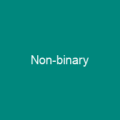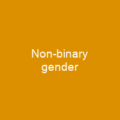What Exactly Is Gender?
Gender is a complex web of social, psychological, cultural, and behavioral aspects that define being male, female, or non-binary. It encompasses more than just biological sex; it includes roles, expressions, and identities. Have you ever wondered why some cultures recognize more than two genders? Or how the concept of gender has evolved over time?
The Evolution of Gender
How did we get here? The term ‘gender’ has shifted significantly in meaning since its inception, with a clear distinction between biological sex and gender emerging in the mid-20th century. This shift was largely driven by feminist scholars who sought to differentiate socially constructed male-female differences from biologically determined aspects.
The Emergence of Gender Studies
Gender studies emerged as an interdisciplinary field in the 1970s, focusing on sociocultural constructions and their impact on individual behavior. This field includes Women’s studies, Men’s studies, LGBT studies, and more, all aiming to understand how gender shapes our lives.
The Social Construction of Gender
Is gender just a social construct? Philosophers like Michel Foucault argue that power determines individual attributes by assigning names and labels. Judith Butler famously stated that ‘gender is like a verb, not a noun,’ suggesting it’s something we do rather than what we are.
The Role of Society in Gender Identity
Society’s expectations and prescriptions shape our opportunities for education, work, family, sexuality, reproduction, authority, and cultural impact. Those who don’t conform to these roles are often perceived as deviant. The construction of divisions along lines of gender contributes significantly to the development of culturally established gender.
The Biological and Social Interplay
How do biology and society interact in shaping our gender identity? Biological factors such as sex chromosomes, hormones, and anatomy play a significant role. Psychological factors like cognition, personality, and self-concept also contribute to the development of gender identity.
The Impact on Intersex Individuals
Intersex individuals often face issues accessing identification documents and securing rights. Countries like Canada, Germany, Australia, New Zealand, India, and Pakistan recognize non-binary or third genders, providing a more inclusive framework for these identities.
The Gendered World of Social Media
How does social media reflect gender differences? Research shows that women are more active on platforms like Facebook, with 57% of users being female. They have 8% more friends and share 62% of posts. Adolescents use social networking sites differently by boys and girls, with girls focusing on communication and relationships, while boys focus on meeting new friends.
The Future of Gender
As we continue to understand gender through a biopsychosocial lens, the future looks promising for greater inclusivity and recognition. Gender studies will likely play an increasingly important role in shaping policies and practices that promote equality and respect.

In conclusion, gender is a multifaceted concept that encompasses biological, psychological, cultural, and behavioral aspects. As our understanding of this complex construct evolves, so too will the ways in which we recognize and respect diverse identities. The journey towards true equality and inclusivity continues, driven by ongoing research and evolving societal norms.
You want to know more about Gender?
This page is based on the article Gender published in Wikipedia (retrieved on February 1, 2025) and was automatically summarized using artificial intelligence.







